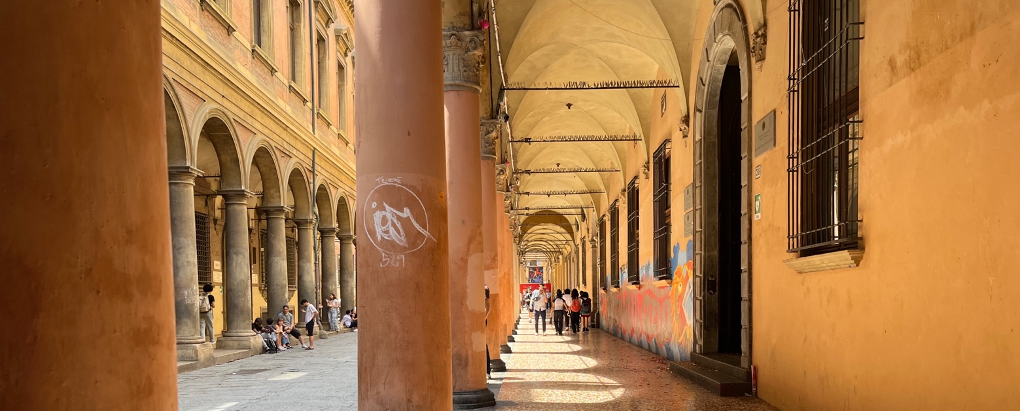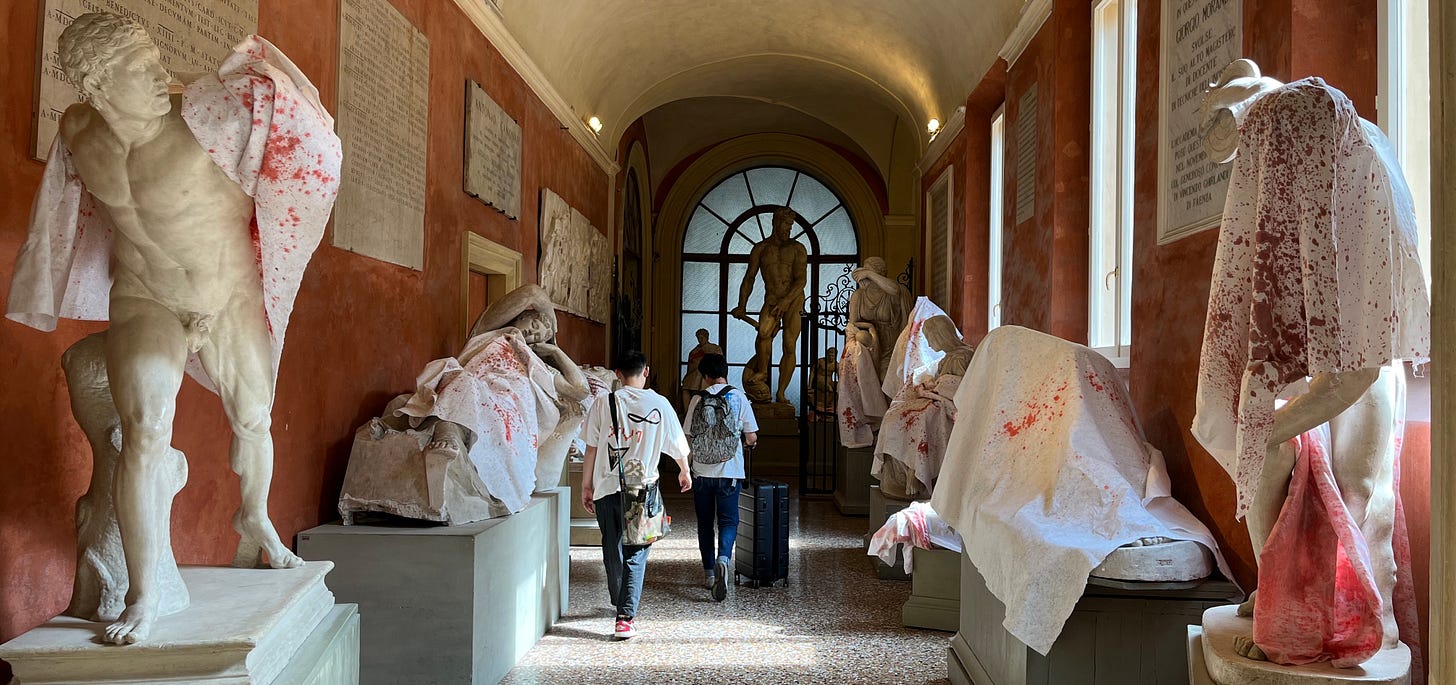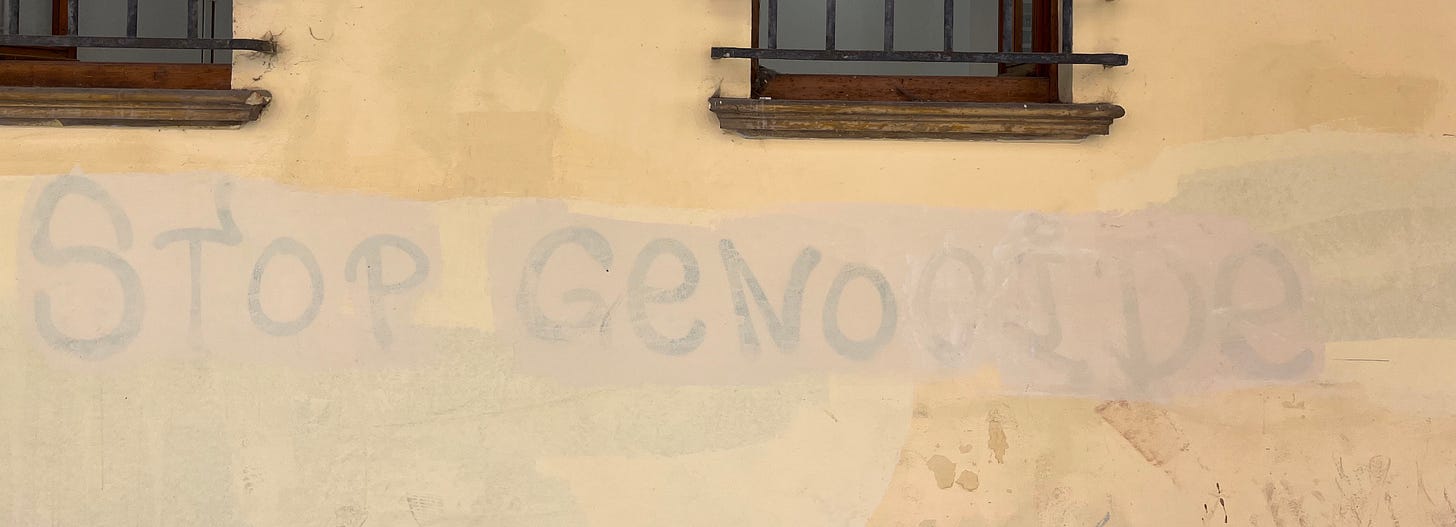My previous two posts, sent to subscribers by Substack e-mail and posted in central urbophilia ON the Work folder, have invited you to a drift, to join us ON the road and to follow some ONgoing activities. Those included SYMBIOSIS Studio at Politecnico di Milano in Lecco, in an almost real time. Here I invite you to see the latest, co+re dérive I-V posts (uploaded from 16.6 up to today, 5.7; see tags below).
But, before that, do let me stay boring and repeat the question: what are we really about here? Asking questions matters. urbophilia@Substack is about some perennial questions, such as: what makes cities – cities, what makes architecture – archi-tecture, what makes lives truly lived, lives worth living. What exploring the idea(l)s of urbanity might mean (to you, to me)?
A repeated question often is a genuinely new question, as it embodies time between the first and current utterances.
The question of what makes cities cities was planted into my head literally during the first lecture in urbanology, delivered by Professor Bogdan Bogdanović. That was during my first year of Architecture at my Alma Mater, the University of Belgrade (Yugoslavia). Bogdan has chosen to profess a non-existing science of cities, those human-made environments which are capable of capturing and expressing everything that humans could, might, should (and should not) be(come) capable of. Over the decades, while practicing, exploring and myself teaching various aspects of the production of space in diverse parts of the world, I have started to cherish attempts to be(come) a specialist-generalist, a kind of professor of urbanity regardless of actual, physical scales and other constraints within which all concrete projects do need to be thought, conceptualised, and delivered. That search was particularly enriching when discussions had to, somehow, span linguistic and cultural barriers, to acknowledge the reality of Jullien’s écart where one had to reach beyond spoken word to establish meaningful (or any) communication – all versions of which I here call languages.
Those include all sorts of verbal improvisations (not unlike those of Umberto Eco’s Salvatore from Piedmont, a monk in the Name of the rose [not a movie but in a book!] who – although no one could understand a strange mix of languages which he spoke – communicated with everyone, including Eco’s readers). A line on paper, a doodle, a sketch ... a photo, manipulated, cropped, cut, distorted, torn up ... or Lego blocks (as a dear friend, urbanist David Sim loves doing), or some sketchy 3D assemblage ... Finger pointing at something. Even within the same language, gestures often say more than the words could. Our experiments (since the Measuring the non-Measurable efforts at co+labo.radović, Keio University) aim precisely at such metatextuality.
So, as I ask you to drift through SYMBIOSIS I-VII and co+re.derive I-IV posts, my fieldwork notes from co+re dérive V begin. For the first time I combine the main, ON urbophilia folder with lateral glimpses, faces + places, ephemera, walks+ talks, and insights, visual mainly folders. While hoping that these posts do make sense individually, their intertwining should generate other qualities which I seek.
now, a restart ...
ON urbanity ... in Bologna, IN Bologna, IN BOLOGNA
Since I posted co+re derive IV, the Conference in Bologna has ended. In my ONchange keynote address I problematised ten years since its inaugural edition in 2014, in the same Archiginnasio Hall. The response was gratifying and inspiring (I hope to summarise and share the main points with you soon).
The event, and all that has surrounded it was perfectly organised by the Founder and President of City Space Architecture, Dr Luisa Bravo and her team. Those three days were, somehow, both intense and relaxed.
While impressions from the Conference held in several, carefully selected spaces in that truly unique city still resonate in me, here I continue what has started in co+re dérive IV, with some records of what Bologna had to tell me during both my solo drifts and dérive excursions in two. I was taking both visual and textual, notes responding to what particular places were triggering in me, what (for some reason, which I once might understand) – captured me there. Bologna has so much to say. It whispers, it shouts and – it cries. Here are only several fragments of powerful, in some cases overwhelming sequences (hoping that the rest might get to urbophilia later on).
Our first working session was held at the Academy of Fine Arts, with a good reason (good organisation does everything with a reason; accidental, spontaneous moments often become possible only because an opportunity was there).
A day at and around Academia Belle Arti Bologna ABABo – the Academy of Fine Arts, Bologna, the precinct which lives up to the highest of expectations that one can have from a city which has written itself into the history of humankind (by the very facts that Alma Mater Studiorum was founded in 1088 there, that the first known reference to university as a place of highest levels of education) was special. For centuries, this place breaths and breeds knowledge, imagination, creativity, urbanity. Critical thought oxygenises the air and spills into the streets. Here streets, piazzas, famous portici know how to whisper, to shout and – they cry.
Only a day earlier, in my talk at Archiginnasio I have introduced these qualities by (for who knows which time) quoting Georg Steiner and Bogdan Bogdanović, introducing the key elements of what a true city has to be – Aristotelian concept of Koinonia – κοινωνία, as a “critical relationship between humans and their cities”, and polis, as “the locale where the density, the gravity of discourse was the greatest. The place of art and invention”. Etymology of both politics and police point at πόλις.
The intensity of political thought and (re)action in the streets and piazzas of Bologna is palpable. While walking there, one has to think about all currently silent universities all over the world. Those deep historic underlays of Bologna can not prevent, nor do they restrain its University to stay young, to be brave, to bring itself up to this moment, to today. To the contrary, it helps bring the streets of Bologna to the conflictual of today.
In that sense, what met us there, at the epicentre of the first discussion day, was what words (what words alone, or what nothing at all) could express. Bologna communicates the most complex, daring, the most needed messages of a moment with sharp clarity, in the way in which only free and critical minds can, precisely as encapsulated in Lefebvre’s definition of the right to the city – as a cry and demand. At (almost) every step one finds that this city is not afraid and that it, thus, is a true city, a place of urbanity ... which, in the end is – responsibility (see Piazza Maggiore below).
In the corridors of Academia di Belle Arti, where the final examinations were going on in parallel to our Conference, the sculptures of its lapidarium were covered with blood stained veils. Michelangelo’s Pieta. No explanation, no words ... needed. We all know. They ask us all – do you act? how do you (re)act?
Streets shout, and whisper ...
These are not graffiti sprayed on by vandals, nor cute images from sanitised media. I do not remember seeing any that communicate negativity; they only, in diverse forms but firmly demand humanism.
“The today has arrived, which makes me miss the yesterday even more” is in accord with the opening of my talk, a day earlier at Archiginnasio.
These words ask where our eyes are directed (I am quite sure, referring to Aldous Huxley’s Eyeless in Gaza).
II
Just across Via delle Belle Arti, facing the Academy is another University Department (accounting, or something). On its walls are traces of an attempt not to counter, but to silence the protesting voices, a failed attempt to clean up and hide the message; not to confront the contents, but to deny expression. The result makes an excellent basis for a palimpsest. The faded, but still visible original text lingers on, waiting for whatever a future message might want to say.
Not far away, on another wall, there is a possible answer to vandalism which wanted to regain the purity of a blank, silent wall ....
Indeed, it seems that one should not be afraid of death, but of not living.
III
Only hundreds of meters away, a very young boy, trying to make do ... with some talent
IV
V
Piazza Maggiore
A public cinema ... in public space, thus public, thus free to all
As a cinema, it presents movies, as a piazza – it talks politics …
… global politics …
… current Italian politics …
… the dramas of global/local politics …
… the non-human (thus inhuman), “apolitical” (thus inhuman in another way) threats.
... “then I would like to lie down in Piazza Maggiore and make love” ...
... CUT




































